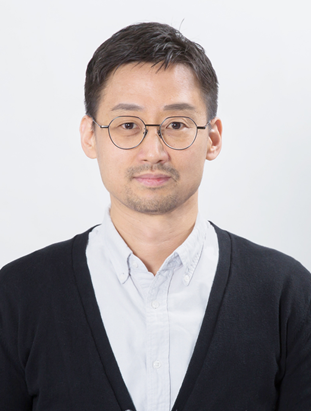Research
Research Areas
- Organic Electronics (OLEDs, Organic Photovoltaic Cells (OPVs & DSSCs), OFETs and etc.)
- Functionalization of Carbonaceous Solids (Fullerene, Carbon nanotube, and Graphene)
- Advanced Materials Chemistry
- Supramolecular Chemistry/Supramolecular Electronics
- Macromolecular Chemistry

- We are interested in the design and synthesis of all kinds of functional p-conjugated materials with unique electronic/optical properties. Mainly, such materials will be applied for optoelectronic devices such as organic light-emitting diode (OLEDs), organic solar cells, and organic field-effect transistors (OFETs). Our research is focused on molecular engineering to improve device performance. We have close collaboration with strong device engineering and device architecture groups. Currently, we are not only interested in a kind of nano-sized molecules and related structures, their synthesis, self-assembly, and processing/device fabrication.
- Carbonaceous solids, including fullerene, carbon nanotube, and graphene, have attracted extensive attention from the physics, chemistry, and materials science communities because of their unique electronic and mechanical properties. Therefore, we are focusing on developing various chemical modifications of the carbonaceous solids for electronic applications. Besides, we are currently studying supramolecular chemistry.
- Thereby, the mission of our group is to advance the science and engineering of organic and hybrid nanostructured materials and enable technological innovations for applications in communications, sensing, displays, energy-efficient solid-state lighting, and power generation. New products based on organic semiconductors will save energy, reduce costs, be lightweight and flexible, increase national security, and enhance the quality of the environment.
- The undergraduate, graduate students, post-doctorals, and research scientists working in our group are exposed to a multidisciplinary and diverse environment that is a blend of optics, physics, chemistry, materials science, and electrical engineering.
Organic LEDs
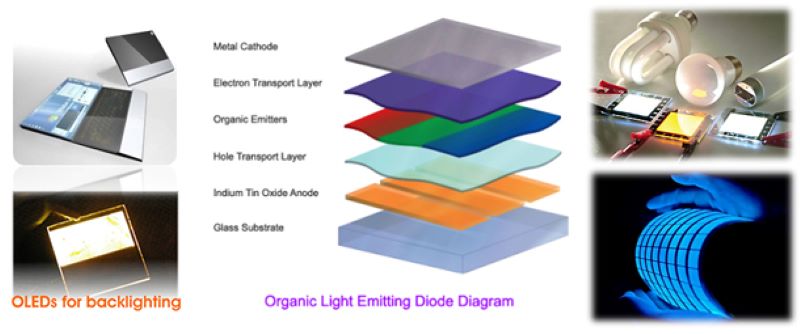
- Organic light-emitting devices (OLEDs) are new light sources that find applications in flat panel displays and solid-state lighting. Our research in this area is highly multidisciplinary and focuses on the following key aspects:
- Development of new molecules and polymers with optimized stability, optical, electrical, and structural properties. New chemistries are exploited to add functionality such as easy photopatterning capabilities, for instance.
- Insertion and testing of the new materials in devices with novel architecture to maximize luminance, efficacy, lifetime, and operation at high temperature.
- Some examples of past accomplishments in this area in our group include anthracene- and phenanthrene-based materials as well as thiazole derivatives, etc.
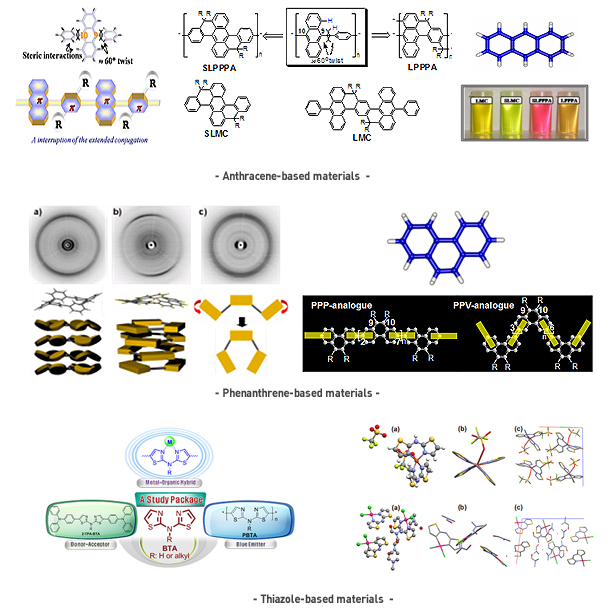
Plastic Solar Cells

- Organic photovoltaic cells like their inorganic counterparts convert optical power into electrical power. Their paper-thin form factor, their lightweight, and their flexibility provide them with unique properties that can be applied in innovative niche applications.
- Ultimately, the possibility to coat organic materials into large-area films at low cost could in the longer term provide economic solutions to solar energy conversion.
- In the near term, the objective of our research is to focus on the optimization of the power conversion efficiency through the development of new materials with high carrier mobility that self-assemble into highly ordered phases, and the optimization of interfaces.
- Some examples of past accomplishments in this area in our group include, the modification of donor and acceptor materials as well as donor-acceptor amphiphilic block copolymers, etc.
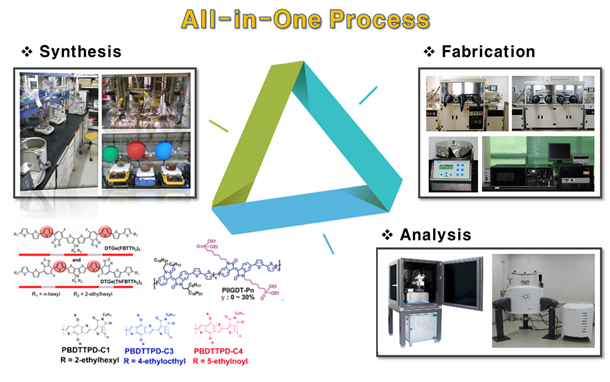
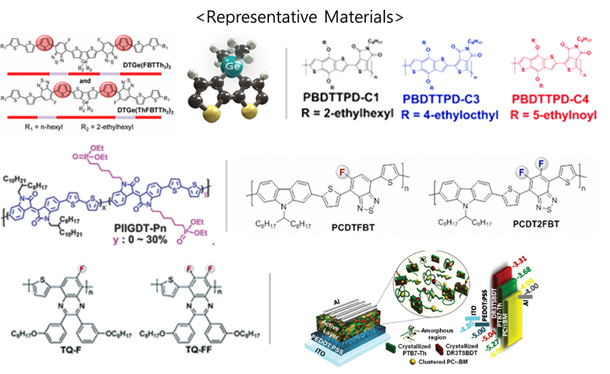
OFETs
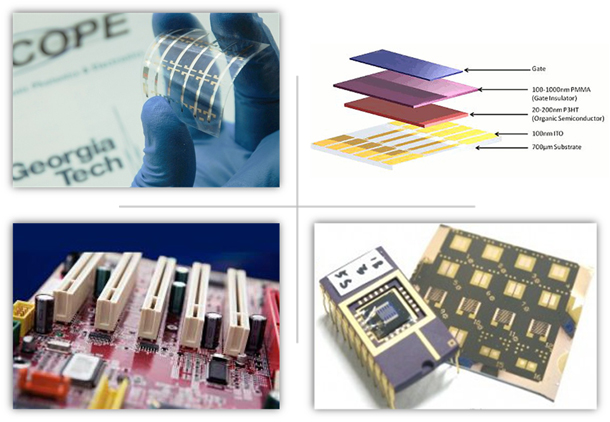
- Organic or some oxide field-effect transistors (FET) that are prepared by low-cost processes such as printing are expected to play an important role in advance of electronic devices that can benefit from thin, flexible form factors and are akin to ultralow fabrication cost.
- Our research in this area focuses on the following key aspects:
> Development of new electron and hole transport materials with high mobility.
> Optimization and modeling of discrete active and passive devices such as field-effect transistors, analog transistors, inverters, ring oscillators, and logic gates.
- Some examples of past accomplishments in this area in our group include, the modification of p-type materials and n-type materials as well as ambipolar block copolymers, etc.

Functionalization of Carbonaceous Solids & Advanced Materials Chemistry
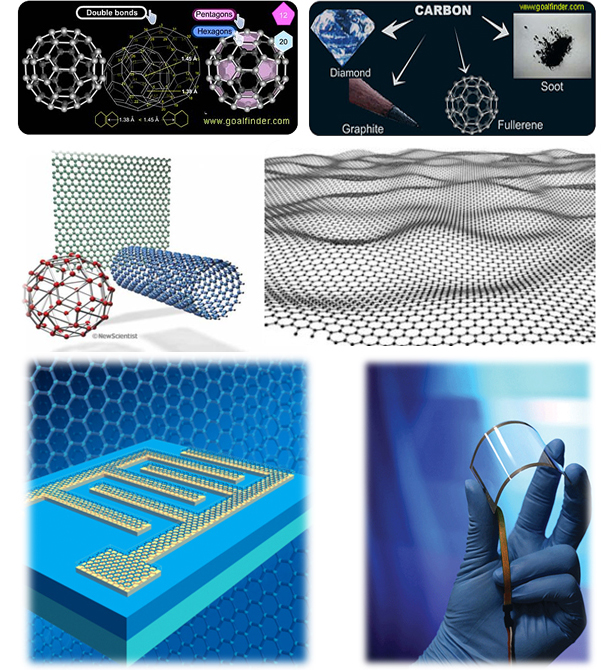
- Carbon does not stop amazing us – again and again. For many years, elemental carbon, found in sp2 bonded graphite or sp3 bonded diamond, was believed to be well understood. The complexity and importance of organic chemistry reflect the fact that chemically functionalized carbon, often forming sp bonded chains, dominates our world, disguised as clothing, medication, or gasoline. Without carbon, the key player in molecular biology, our life would be different, or not exist in its complexity. The picture emerging from findings across different disciplines suggests that form determines function.
- Carbon is a real champion, with its layered sp2 allotrope being as stable as the sp3 bonded crystalline diamond and, even without functional groups, almost as stable in sp bonded chains. In addition, the design and synthesis of new materials (conjugated materials) is a major focus of research in our group as well.
- Our research in this area focuses on the preparation of solution-processable carbonaceous solids (fullerenes, graphite materials, and etc.) via chemical functionalization on their surface. Besides, currently, we are emphasizing various chemistry of materials.
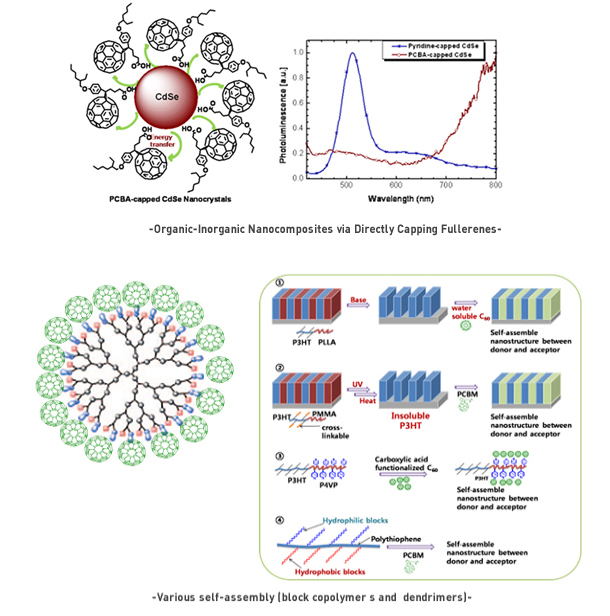
Collaborated Research Teams
-
Fred Wudl
Chemistry & Biochemistry, University of California at Santa Barbara (USA)
-
Alan J. Heeger
Center for Polymers and Organic Solids, University of California at Santa Barbara (USA)
-
Taek Seung Lee
Graduate School of Energy Science and Technology, Chungnam National University
-
Jin Young Kim
Department of Energy Engineering, Ulsan National Institute of Science and Technology
-
Won-Youl Choi
Department of Metal and Materials Engineering, Kangnung-wonju National University
-
Shinuk Cho
Department of Physics, Ulsan University
-
John R. Reynolds
Center for Organic Photonics and Electronics, Georgia Institute of Technology (USA)
-
Yongfang Li
CAS Key Laboratory of Organic Solids, Institute of Chemistry, Chinese Academy of Sciences (China)
-
Joon Hak Oh
Department of Chemical Engineering, Pohang University of Science and Technology
-
Hyesung Park
Department of Energy Engineering, Ulsan National Institute of Science and Technology
-
Yong-Young Noh
Department of Energy and Materials Engineering, Dongguk University
-
Sung Heum Park
Department of Physics, Pukyong National University

